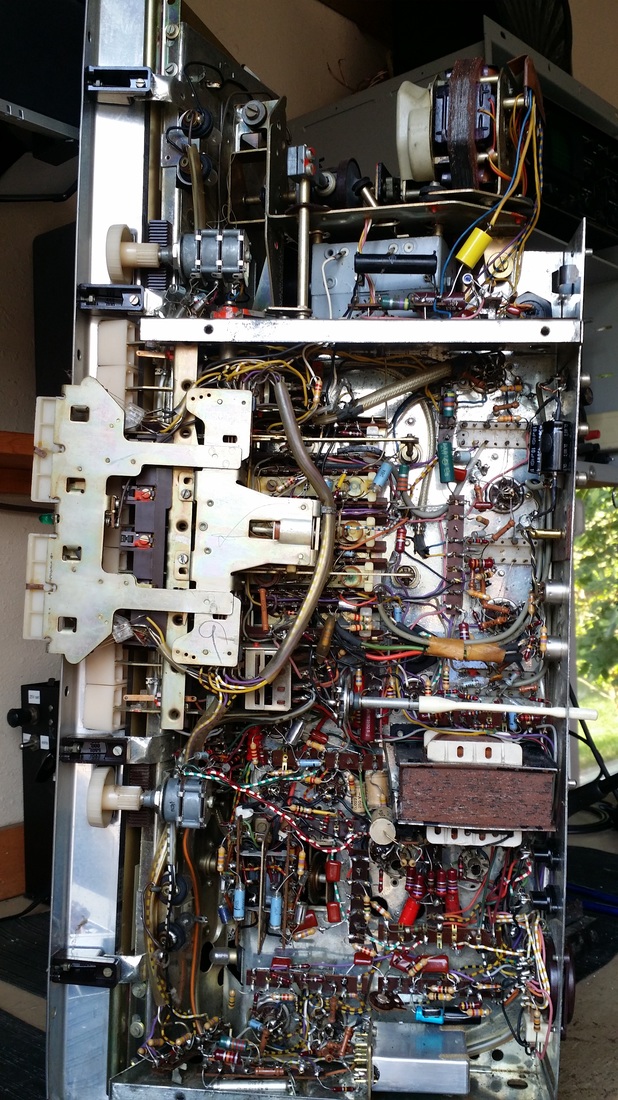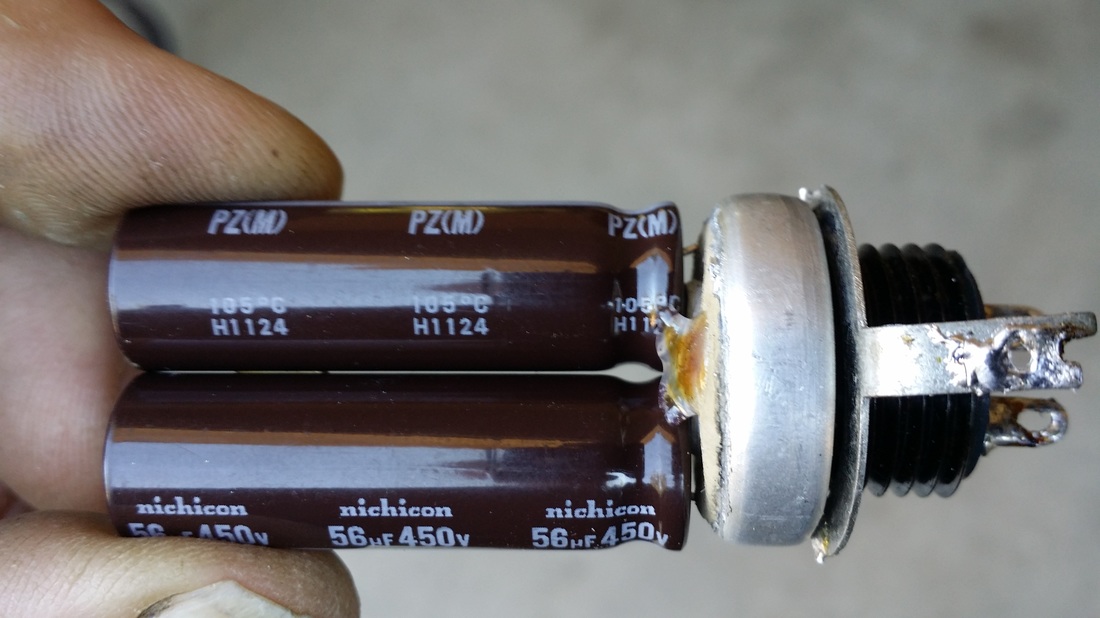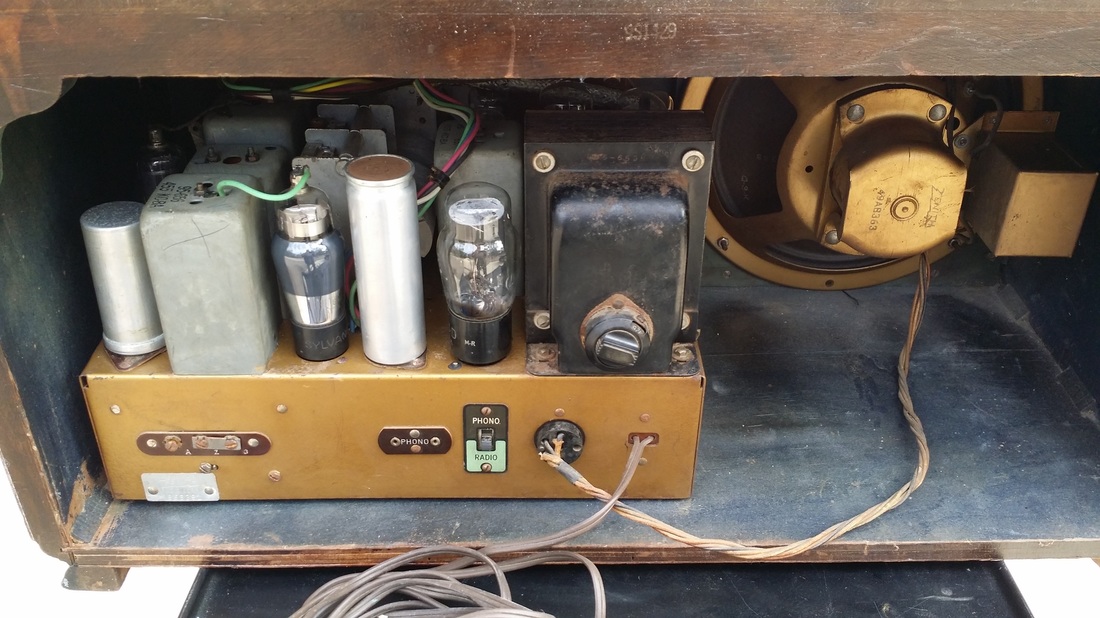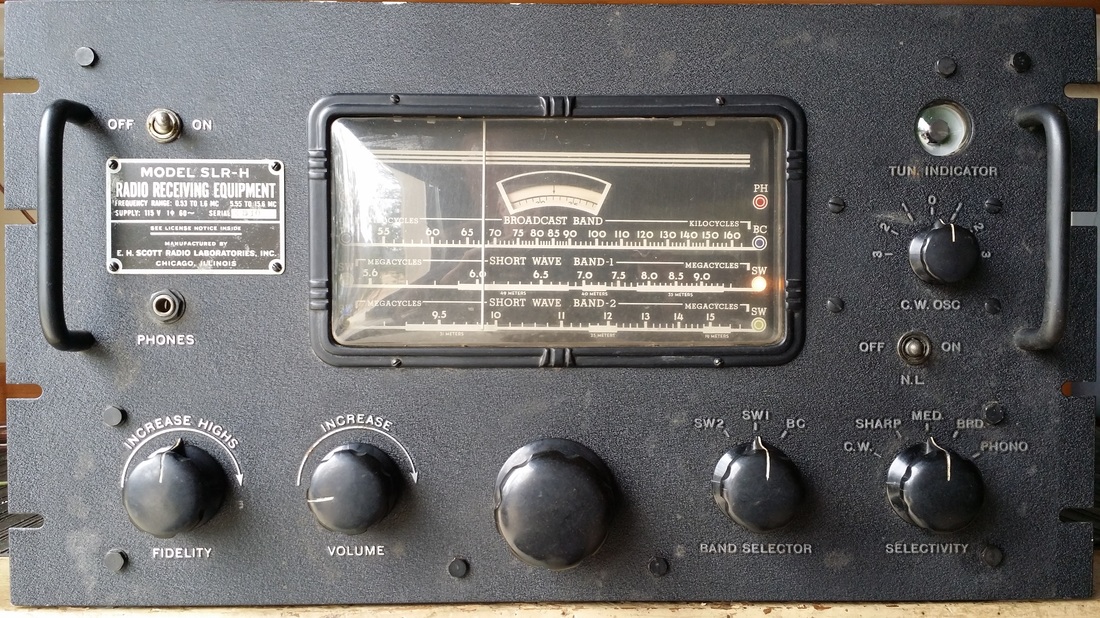So Jerry has been looking for a new home for his collection. Not posting it at the auction site or on Craig's List but, rather, offering it to other collectors that might finish what he started. Asking price - - $0.
We weren't the first to acquire items from Jerry's collection. Best I can tell, we were the last. I would have liked to have seen all of the treasures that had already been hauled away by collectors living nearer to him. By the time we got there consideration was already being given to using cabinets for firewood. (DO NOT do this- bad for your chimney - if for no other reason!)
I wonder if the others saw the little white tags on each radio listing the date of purchase and the price? Ten dollars, thirty-five dollars, and a date of purchase. I was about to throw away one of the tags as I refinished the first cabinet, but, NO. The tag was reaffixed under the rebuilt chassis. It is hard to believe that the one-of-a-kind, export, Zenith had sold for $35 - or even more so that it was left behind by the others. There must have been some really special radios stacked on top for it to remain at the bottom of a pile along one wall. No matter! I am happy to have it.
The unit has a single ended stereo amp using EL84s and 5 speakers. It receives broadcast band, Shortwave and FM. It does not have a multiplex (stereo) FM receiver but does have a powered socket for a multiplex adaptor - which I would like to find. It is a relatively rare unit probably attributed to the high original selling price.
I did find a schematic for this radio which has more resemblance to an architectural drawing than the schematics I am accustomed to. I did not care for it much but it was essential in reversing the modifications that had been made to the motor-driven, remote/automatic control functions.
It sounds wonderful, especially for a table radio. Now all I have to do is hang onto it. In the past I have had several of these German-built, stereo sets displayed in the museum, often used for background music. None of them were put up for sale. Yet I sold them all to people making generous offers while visiting the display. So I am just going to have to resist reaching out and grabbing that wad of cash next time ;-)
P.S.
I almost forgot! Sombody had been fiddling with the motor drives on this radio. They managed to defeat one of the limit switches on the tuning drive motor. SO there was a broken dial string. There are 4 dial strings on this unit. Some of the strings have interaction to other strings/motors/dial indicator/springs/and so on. The design is either genius or sadistic - maybe both. Anyway, it is genius until a string breaks. Then the designer teases you with a little access port behind the dial string. You can SEE the string through this hole and that is about it!
AFTER restringing 3 of the 4 strings, making adjustments to the motor drive, guessing at the broken string length - well - quite a bit of time passed! I adjusted the motor limiters and all of the dials work.
THE second radio on the bench was the Zenith pictured at the top of this post. It is a rare, 9-toob, export Zenith. Rare, meaning that the picture above and those to follow are probably the only ones that you are going to find on the web - with an original, intact cabinet - one with the original photo-finish intact, at that. Export meaning that is has a switchable power supply transformer that would work in Europe as well as the US. It has nine tubes, including the dual display 6AF6 eye tube (two segments that open and close), push-pull 6V6 output and an RF amp. Overall, it is a very nice radio, which leads me to wonder why the export sets seem to be superior to the domestic sets.
The third restoration is a Scott boat-anchor from 1943.
Boat-anchor is a good description. It is shielded almost everywhere and rack mounted in a substantial metal cabinet - I can't lift this one by myself. One of the interesting aspects of the shielding is the location of the metal 6K7 RF amp with the grid cap in the antenna section and it's base in the IF section. A portion of the tube's body is visible between the shielded sections.
















 RSS Feed
RSS Feed